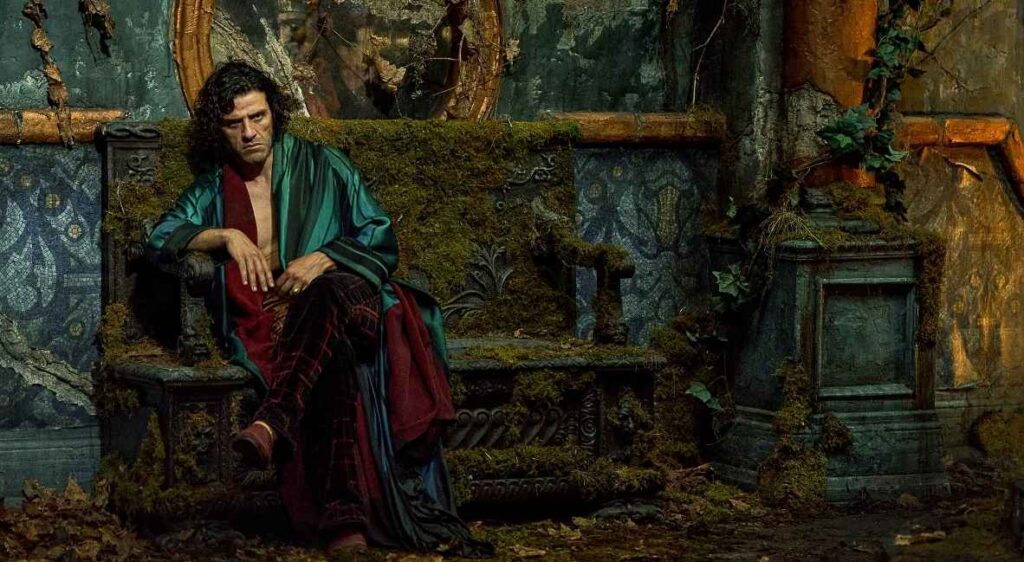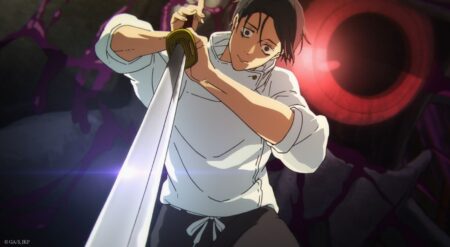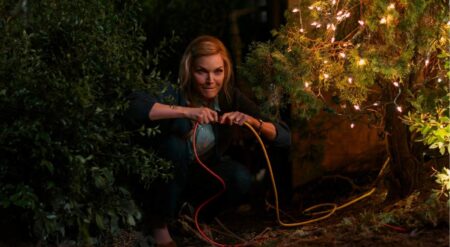Guillermo del Toro‘s Frankenstein (2025) has been one of my most anticipated films since its announcement. The Mexican filmmaker has long looked at monsters with admiration, empathy, and love. You can track it through his work on comic book adaptations, gothic romances, fantasy, and more. The tender care that del Toro shows his monsters establishes an empathetic foundation for his audience to view others through.
Frankenstein (2025) feels like a natural culmination of his love for monsters. Where The Shape of Water is about love across any barriers, this film is more familial. Where his other stories distinctly told us to love the “other” for their differences, this story asks us to see ourselves.
In his adaptation of Mary Shelley’s landmark work, del Toro opens his film in the Arctic. Victor Frankenstein (Oscar Isaac) is wounded in the snow, a snarling mess of a monster ripping its way through the tundra and toward the ship and crew who found him. It’s here where del Toro showcases a tinge of action, with Jacob Elordi‘s Creature tearing through the crew. Cloaked in furs and his face mostly hidden by a hood, this is the Creature at his most bestial.
Guillermo del Toro is a student of Mary Shelley, and it is showcased in nearly every choice.
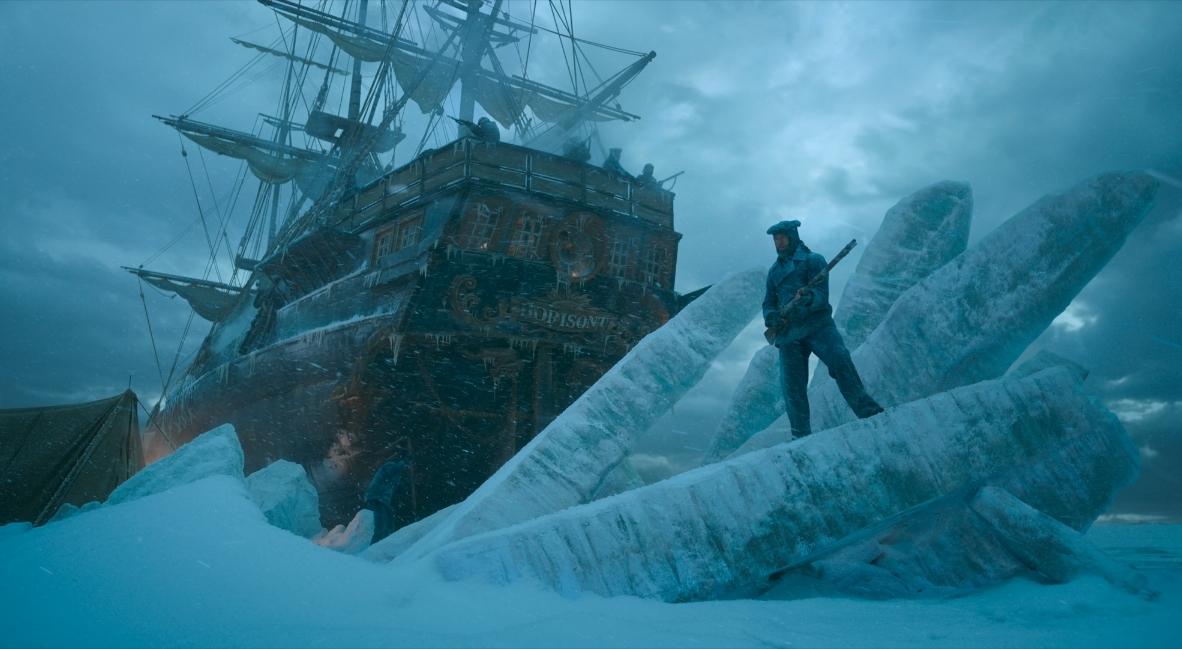
Once the monster is subdued, Victor is taken care of, given laudanum, and yet he begs to be left on the ice. He is begging to be abandoned for the Creature to take, and end the cycle of death. When the Captain inquires about his story, Victor begins to tell it—the story of his childhood, his history, and his Creature.
From the very beginning, Frankenstein (2025) is a look at the monster and the man like we’ve never seen before on the silver screen. The reverence for Shelley’s story is alive in every choice that Guillermo makes, while subtle nods to other adaptations also peak through.
The costuming and production design are decadent. The gowns, the suits, the cut of the pants —every bit of Frankenstein has been curated to bring to life a period in time by evoking memories of it. Del Toro has curated every scene to pick at every memory you have of Frankenstein as a story and as a visual language, realigning it to where it began while also leaving his own marks on its legacy.
Additionally, the cast that Guillermo del Toro has assembled is brilliant. Together, they push each other to be grander, louder, and more in tune with the world that the auteur has created on the screen. While Oscar Isaac and Jacob Elordi powerfully command the film as its protagonists, Christoph Waltz, Mia Goth, and Felix Kammerer all contribute to the tragedy of the story in their own unique ways.
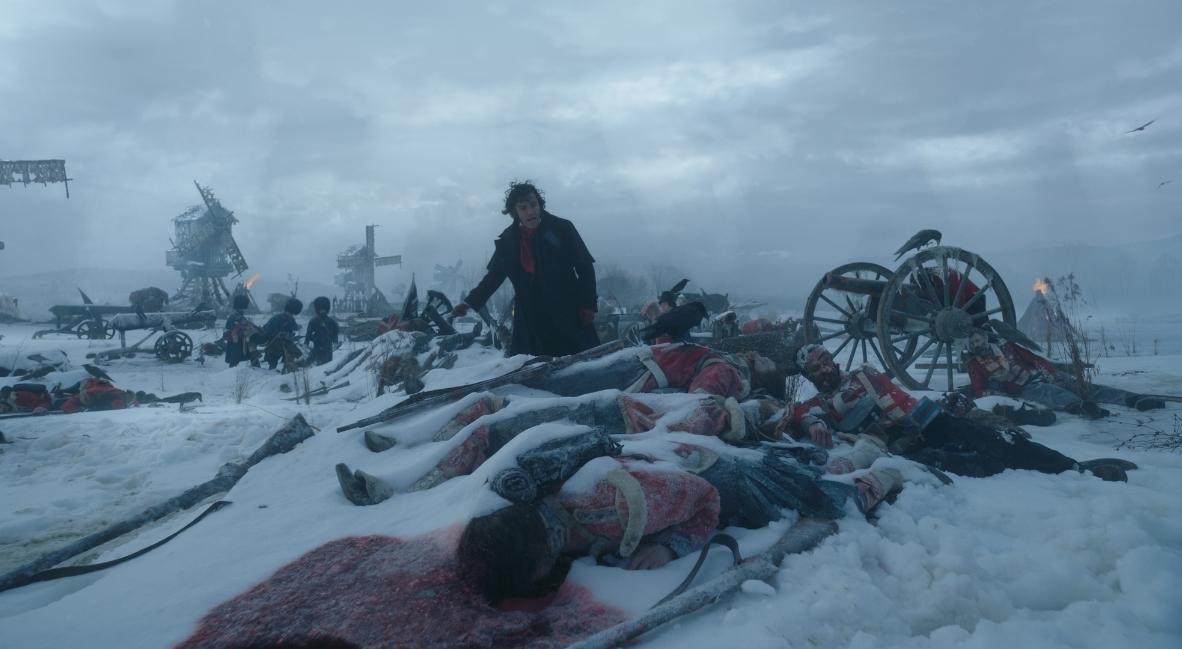
An eccentric, Harlander (Christoph Waltz) is the benefactor who has contracted Victor Frankenstein to complete his hypothesis, which he attempted to defend in academia, but was ostracized for. Harlander is rich and obsessed with stopping death and preserving life in every way that he can, including a reverence for photography.
As for Victor’s brother, he is loyal. Despite his fear of his brother, William Frankenstein (Kammerer), heeds Victor’s every call. William’s fiancée, Elizabeth (Goth), is a woman of science, a lover of insects and freedom, and firmly pushes back against the violence of men and war. And then she becomes an object of Victor’s affection and obsession. As a film, there is very little to find flaws in. However, as the film begins to invest in larger set pieces in an action sense, the harsh CGI quality begins to mar the experience.
The only issue with Frankenstein is how harshly the CGI effects clash against the beauty of the practical work in the film. A master of practical effects, it is even more garish given Guillermo del Toro’s filmography. In fact, there are multiple moments throughout the movie that the films approach to gothic architecture would have felt more alive and beautiful if produced in the same vein as Crimson Peak. Leaving the question, was this choice del Toro’s or Netflix’s to make?
Frankenstein (2025) has one flaw, and it’s its use of CGI effects, when seen up against beautiful, practical effects artistry.
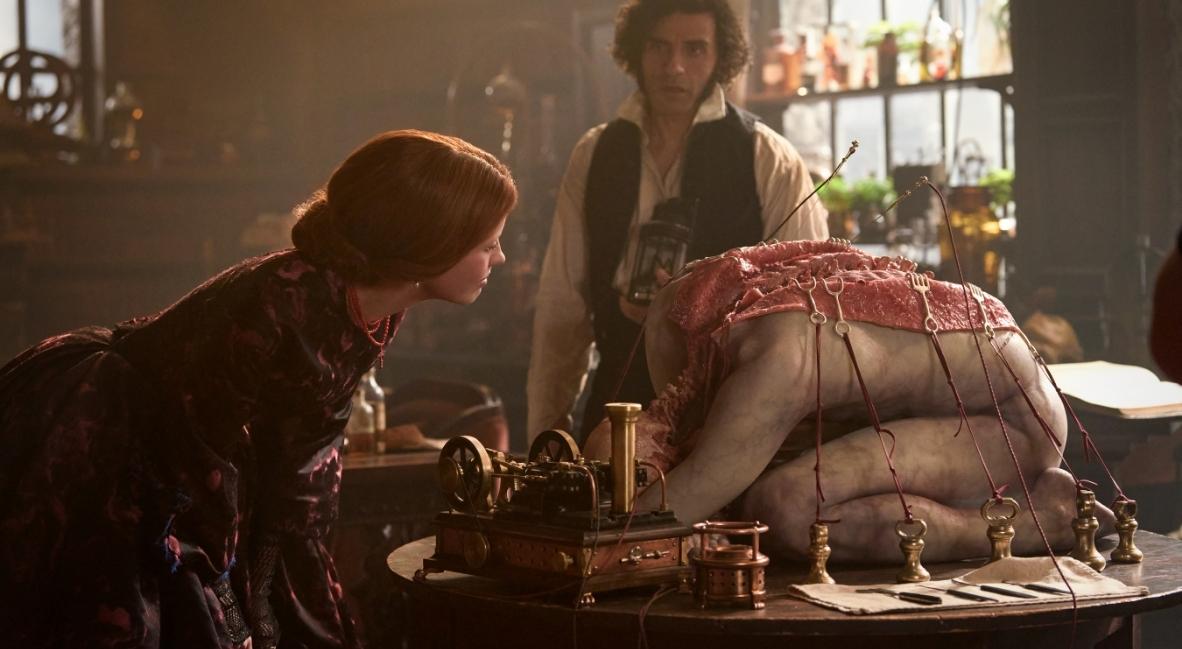
From the architecture of the tower, which Victor has turned into his operating room, to the wolves that attack the Creature, these moments cheapen what is otherwise a grounded and darkly whimsical look at creation. This doesn’t mean that the special effects work is all harsh. The garish nature of the CGI effects comes to a head because o the strength of the practical.
The scene where Victor assembles the Creature is one of the most detailed and mesmerizing portrayals of the human body. We see Victor pulling on tendons to move the fingers of an assembled hand, cutting bits of muscle to layer on other limbs, and putting together pieces of a man as artfully as Da Vinci’s Vitruvian Man.
Victor’s creation is as much art as it is science, tenderly crafted from all of the perfect bits of others. Every piece of the Creature has been handcrafted with care, and that makes the sequence and its violence all the more stunning. In one moment, Victor is hacking limbs, throwing bleeding sacks of bodily bits into the basement, and in the other, he is carefully tending to every small detail with warmth. For del Toro, creating life, and the science behind it is an intimate art.
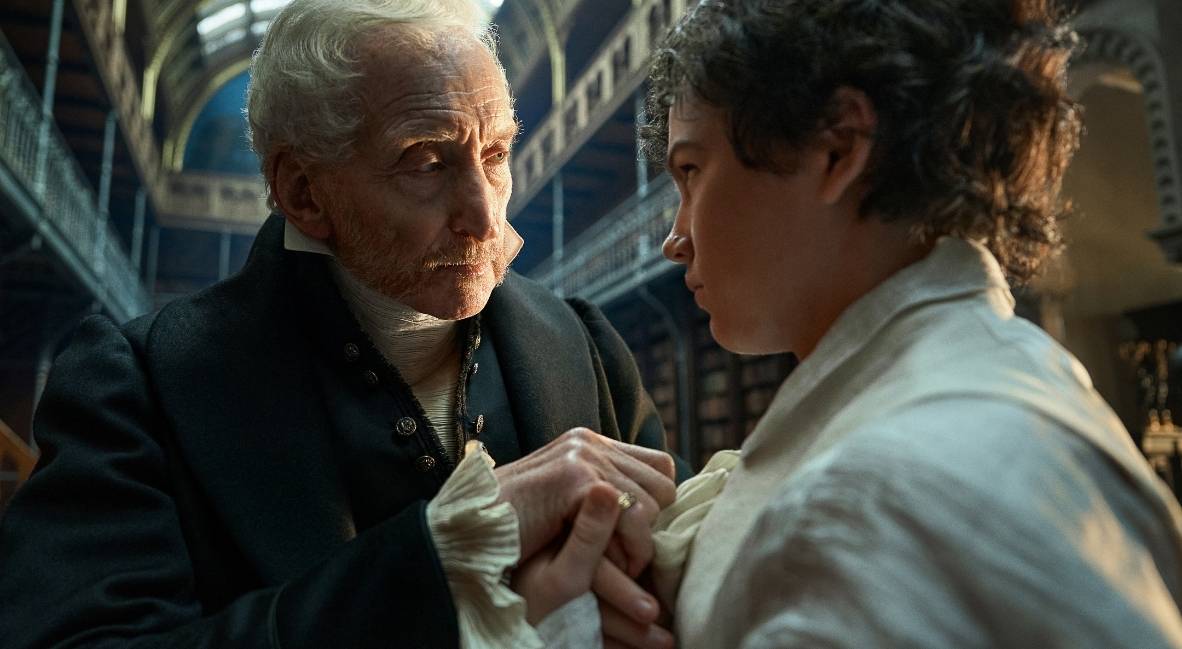
Guillermo del Toro’s Frankenstein, like much of his work, focuses on tenderness as much as on brutality —the two sides of man. Narratively, del Toro sticks the closest to any adaptation of Mary Shelley’s work we have seen and, in doing so, creates a new vision of science, the body, and perfection. Where Shelley’s work looked at man’s hubris in a general sense, del Toro’s take focuses on a father’s hubris, specifically.
Victor’s father is a doctor, but his care only goes as far as his reductive, machista assumptions will allow. He is a narcissist, hating one son for bearing no resemblance to his black hair and dark eyes, while doting on the other with his golden hair and light eyes. He wants to mold his sons into his own image.
Where William Frankenstein is cared for with love, because he already shares their father’s face, Victor must become him through different means. He must be a scientist, a doctor, and perfect. The standard Victor was pushed to in his early years is heartbreaking; his father’s violence is apparent when Victor answers a question wrong. And so, Victor carries that need for perfection forward.
Oscar Isaac delivers a familiar but rousing performance as Victor Frankenstein, which has to be applauded.
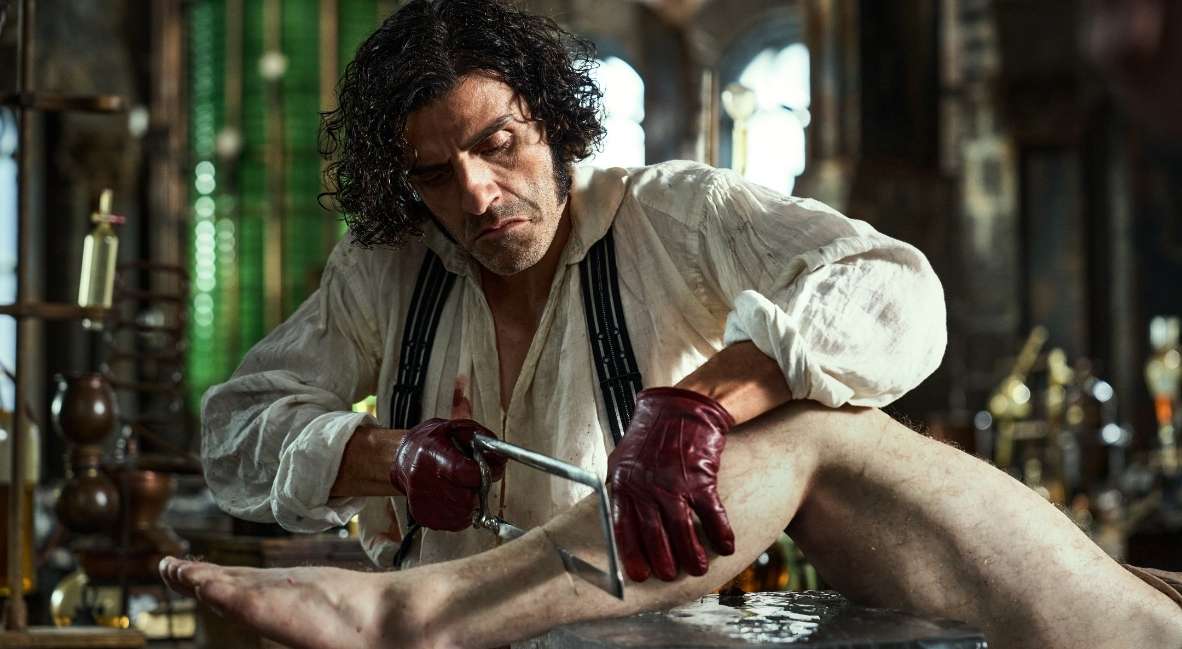
By the same token, when we see Victor in the world, he has taken on his father’s qualities. He is intelligent, a doctor (despite being kicked out of the halls of the medical college for bringing a torso to life and blaspheming God), and as he meets others, we see his cruelty and machista way of thinking rear its head. This is where Victor’s longing for Elizabeth comes in.
As Victor, Oscar Isaac delivers a familiar career-defining performance that oscillates between charismatic, cruel, and pitiful. His brief flirtation with Elizabeth is done out of lust, but more so out of a need to control. While he is enamored with her mind and how she matches his interests in science, once she exhibits her free will to reject him, his yearning turns to the need to control.
Frankenstein is both a faithful retelling of the bedrock of science fiction and an exploration of how the genre reflects our own humanity and the flaws within it. Victor’s inadequacies and need for perfection can’t fathom Elizabeth rejecting him and choosing his brother. He turns that control on to his Creature. And so, we see him continuing through his own hubris and narcissism, begin to shift into his father.
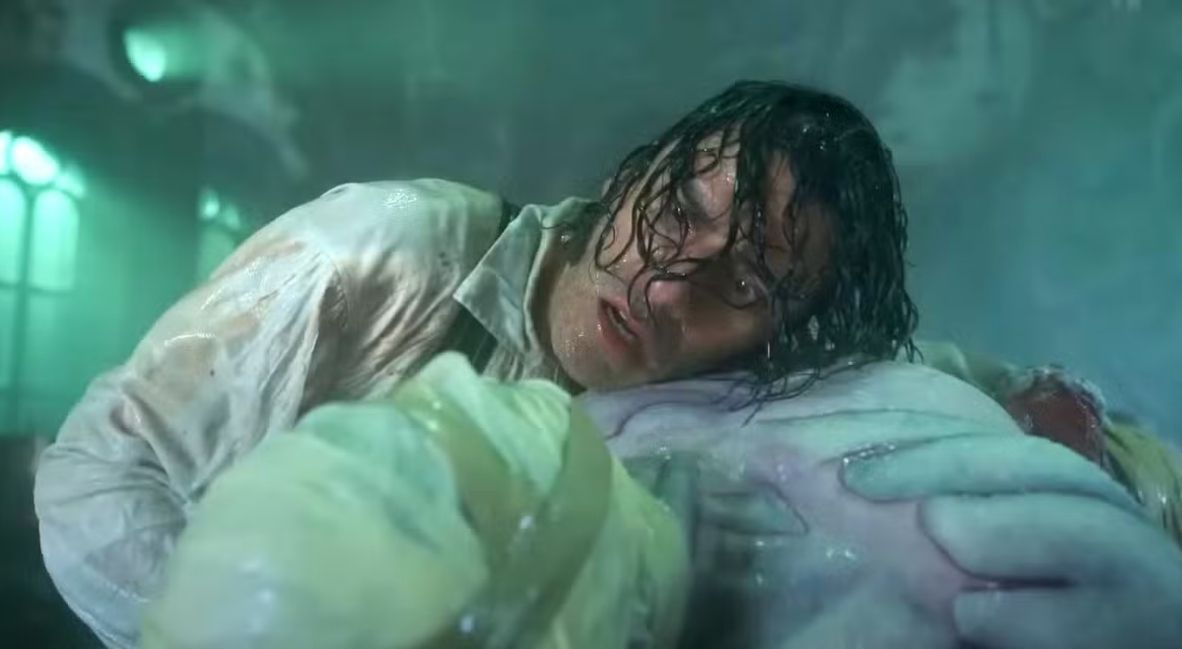
This is no clearer than when the Creature comes to life. On the first night, Victor cares for him, teaches him, and caresses him with a loving touch. The Creature is a marvel, a thing that he made. It is, despite its stitched-together body, him. And like his father before him, he pushes toward perfection. Victor must be the perfect man, and so, his creation must be too. The look of wonder and awe in Victor’s eyes fades to contempt and cruelty, and once it does, he gives himself over to it.
The farther his creation moves from him, with his limited vocabulary and fear, the more Victor resents him. The more he hits him, and the more that he refuses to let touch be a part of their relationship. And when he becomes a marvel to his brother and the woman who rejected him, Victor must snuff him out, not because of a danger, but because of the smear he represents on himself.
The core narrative device in Frankenstein (2025) is the boat in the Arctic. It is the end of Victor’s story and the place where he recounts his beginning, his success, and how he came to see his creation as his failure. When the immortal man returns to the boat seeking his creator, the Captain allows him to sit and tell the audience —and him —what it was like to be a child.
As the Creature, Jacob Elordi is allowed to become more than just a typecast object of desire.
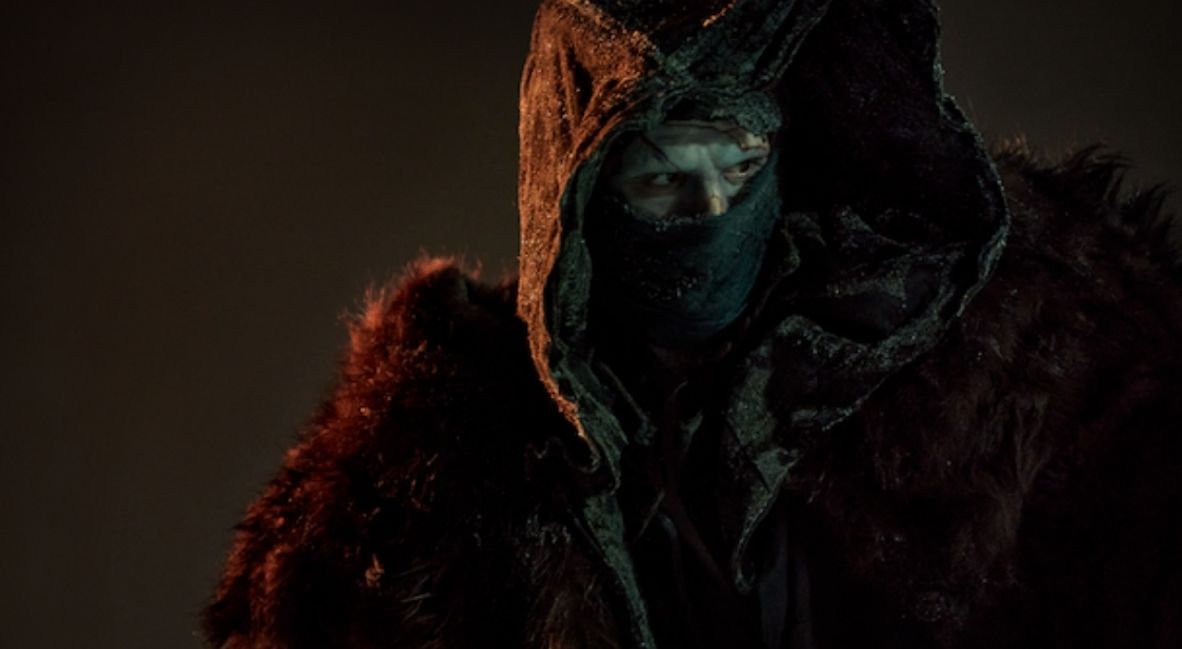
Cleverly, the Creature’s own tale mimics that of his maker. From childlike wonder to villain, he undergoes the understanding that the violence he is subjected to from the world or his father is due to the simple act of existing. It’s not that the Creature is childlike that makes him empathetic, but rather that he is a being coming to the realization, through no thought of his own, that he is to be hated. The Creator is stuck in a cycle of violence, born into it, and then blamed for it. All while his father refuses to see how it all came to be. The Creature may not be entirely human, but he is his father’s son.
Jacob Elordi’s performances have, in the past, been propelled by his looks. Frankenstein, in turn, presents him with a unique opportunity. Where other roles have cast him as the conduit of lust and romance, objectifying his body for audiences and characters, Frankenstein allows him to use his body in new ways.
The prosthetics work on Elordi is some of the most beautiful of the year. The stitches running across the curvature of his muscles and the joints of his limbs accentuate his body without sexualizing it. At least not with the same gaze we have seen him in before.
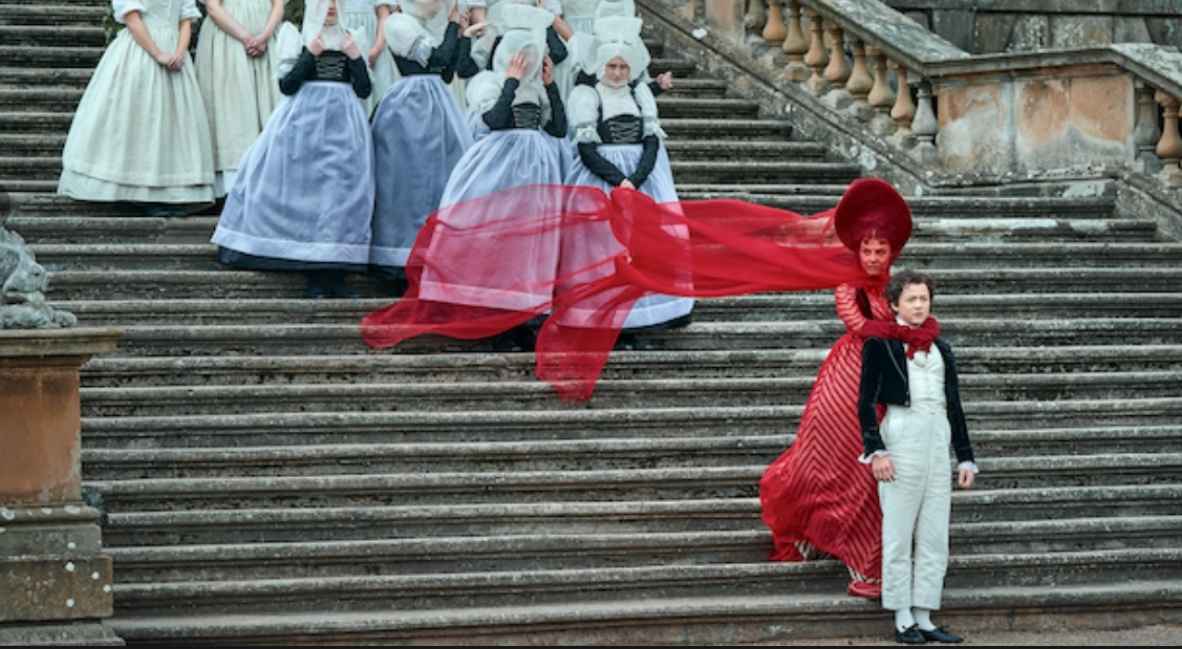
Here, when intimacy and attraction are shown, it’s subtle and simple. It’s a yearning to stop the loneliness, but an understanding just the same. And the tinge of sadness we see here is heartbreaking, and the need for a partner isn’t about lust but about finally not being alone.
The Creature is Elordi’s best role yet, and showcases how much he can do when trusted to be more than a face. His movements are unsure and uncanny, and his innocence is highlighted in all of this. The way Elordi contorts his body and his expressions changes as he grows, until his humanity starts to take shape, as if molded out of clay a second time.
Del Toro is not one for subtleties. Why present subtext when you can be bold in your decisions? And that is no different in Frankenstein (2025). Yes, there are layers to each scene; however, through color and framing, his story presents a map in emerald and scarlet.
Frankenstein is a dual protagonist narrative. The film moves between the two of them, recentering the focus as we view a new part in the cycle. Both men are unpacking their trauma with no understanding of what they have handed down or what they have received. Violence begets violence, and the reach for perfection perpetuates it.
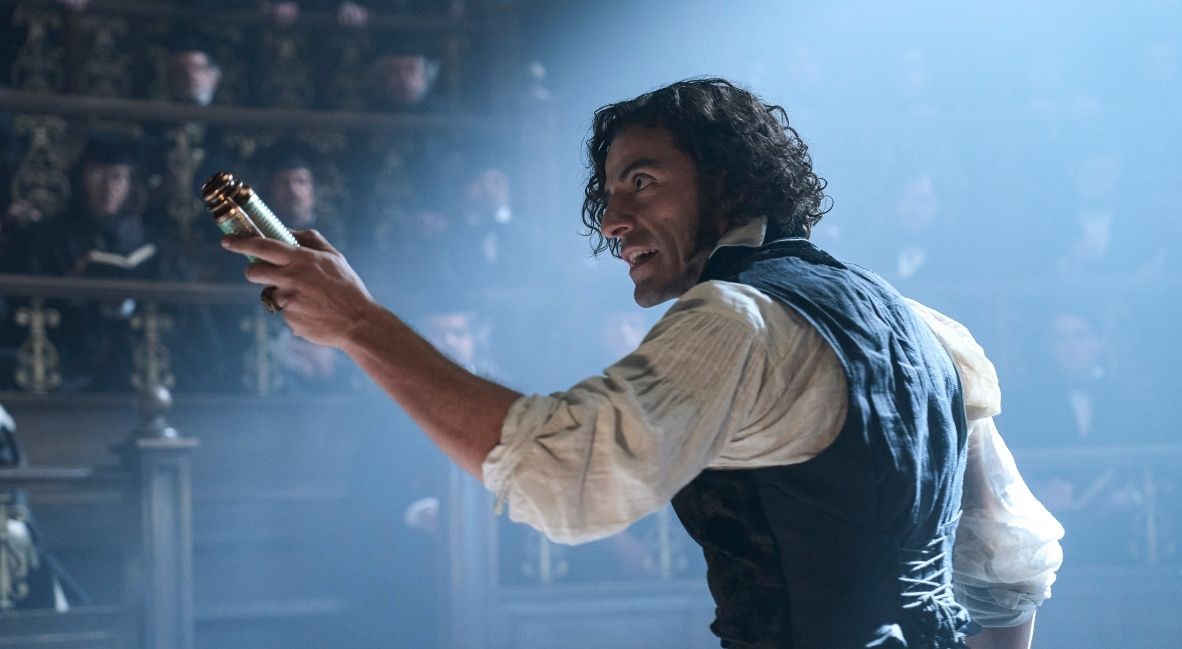
From a storytelling perspective, Guillermo del Toro highlights a concept that he has long worked into many of his films: empathy for monsters. However, as his directorial gaze shifts, he points out the monstrosities that even humans become. He asks us to empathize with their creators and their creations, and to understand our place among them. Not because they are innocent, but because both the wolf, the hunter, and the sheep all exist as they are, and a violent world cyclically rips through them all.
In many of the moments where we see the cycle from father to son damage the next generation of Frankenstein, it’s hard not to see a life that many men in my life have gone through. And given both Isaac and del Toro’s cultural backgrounds, a story about masculinity and fatherhood takes on a separate lens from those who grew up in Latin households.
There is no absolution in Guillermo del Toro’s Frankenstein, but there is understanding. Trauma breaks us, and the search for perfection, rejecting the fingerprints it leaves, only makes it burrow deeper. If not for the choices made during the CGI sequences, Frankenstein would stand out beautifully in del Toro’s filmography. Still, it showcases why the auteur is the maestro of monsters. Del Toro has taken Victor Frankenstein from mad scientist back to the tortured soul, and horror is better for it.
Fankenstien (2025) is in theaters now and will stream exclusively on Netflix on November 7,2025.
Frankenstein (2025)
-
Rating - 8/108/10
TL;DR
If not for the choices made during the CGI sequences, Frankenstein would stand out beautifully in del Toro’s filmography. Still, it showcases why the auteur is the maestro of monsters. Del Toro has taken Victor Frankenstein from mad scientist back to the tortured soul, and horror is better for it.

